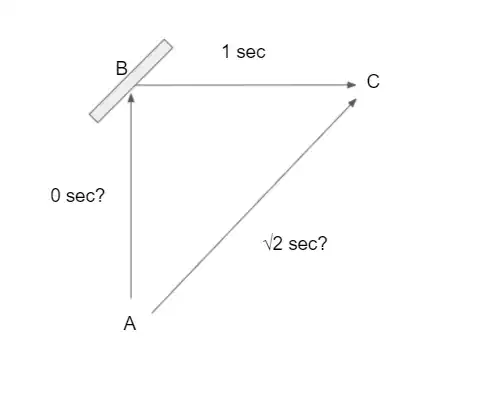So, I just saw this Youtube video by Veritasium that discusses how it's impossible to measure the one-way speed of light from a light source to a detector, since it's impossible to synchronize clocks in a fashion that would prevent a directional difference in the speed of light from altering clock speeds via relativistic time dilation in such a fashion that it would conceal directional differences in the speed of light. As a result, it's only possible to measure the two-way speed of light, where light passes from a source to a reflector and then back to a detector located at the light source, and it's impossible to rule out a directional difference in the speed of light, which could be as extreme as light traveling at c/2 in one direction, and instantaneously in the other.
However, Veritasium goes on to briefly mention that if there is true, we would observe stars in the direction of the instantaneous speed of light in real time, rather than through a time delay of hundreds or thousands of years. During his papers on relativity, Einstein noted this possibility, and assumed that it traveled at equal speeds in all directions; as a result, this assumption has apparently been called the "Einstein Synchronization Convention".
This suggests to me that if the Einstein Synchronization Convention is untrue, and there is a directional difference in the speed of light, we should be able to notice this through astronomy; if the light takes less time to travel to us from some directions than others, we should see older stars and galaxies in the directions where light travels more quickly than in the directions where it travels more slowly, since we'll be observing them as being closer to "real time". For instance, if you had galaxies 3 billion light years away from us, but it took light 2 billion years to reach us in one direction and 4 billion years to reach us in the other direction, you'd expect the galaxies in the 2 billion year direction to look 2 billion years older than the galaxies in the 4 billion year direction.
Is this correct, or would a variation in the speed of light invalidate our methods of measuring distance and/or the age of celestial objects? Have there been any astronomical studies investigating this, and if so, what have they found?
To be clear, I am specifically asking about detecting directional variations of the one-way speed of light using astronomy. I don’t want answers that discuss variations of the speed of light due to the velocity of their emitters (which was disproved by experiments prior to Einstein). I don’t want answers talking about clocks or simultaneity, since they’re not really directly relevant to this question.
